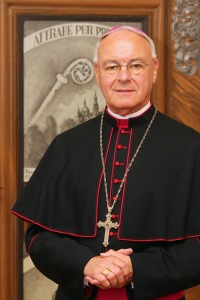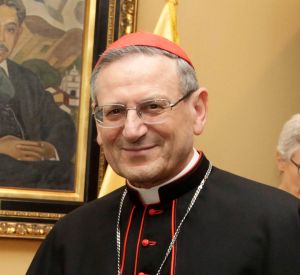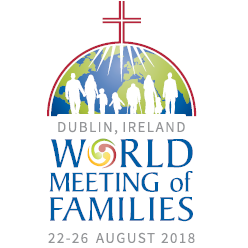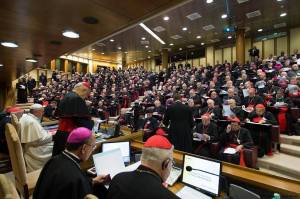Pope Francis yesterday surprisingly announced that he will create 13 new cardinals on 5 October. Surprisingly, because the numbers do not really suggest the ned for a consistory at this time. There are currently 118 electors, cardinals who are active in the Roman Curia and who can vote in a conclave to elect a new Pope, with only 8 aging out between now and the end of 2020. It is clear, however, that Pope Francis prefers having too many rather than too few cardinals, and so habitually ignores the rule that there can only be a maximum of 120 electors (he’s not the only Pope to have done so, however: Pope St. John Paul II once expanded their number to a massive 135).
And, as ever, he also aims for a representative College of Cardinals. In this round, he selects prelates from Luxembourg and Morocco, countries which have never had a cardinal before, but also more traditional cardinalatial sees such as Bologna, Havana and Kinshasa.
And again we see the fallout of recent papal visits abroad. Hence cardinals from Lithuania (visited in September of 2018) and Morocco (March 2019).
After 5 October, there will be 215 cardinals, with 128 electors. Two days later, the latter number will drop again, as Cardinal-designate Ambongo Besungu’s predecessor in Kinshasa, Cardinal Laurent Monsengwo Pasinya, reaches the age of 80.
Below a list of the new cardinals:
- Miguel Angel Ayuso Guixot (67, Spain)
- President of the Pontifical Council for Interreligious Dialogue and Prefect of the Commission for Religious Relations with Muslims.
- José Tolentino Medonça (53, Portugal)
- Librarian of the Vatican Apostolic Library and Archivist of the Vatican Secret Archives.
- Ignatius Suharyo Hardjoatmodjo (69, Indonesia)
- Metropolitan Archbishop of Jakarta, Military Ordinary of Indonesia and President of the Episcopal Conference of Indonesia
- Juan de la Caridad Garciá Rodríguez (71, Cuba)
- Metropolitan Archbishop of La Habana
- Fridolin Ambongo Besungu (59, Democratic Republic of the Congo)
- Metropolitan Archbishop of Kinshasa and Vice-President of the National Episcopal Conference of Congo

- Metropolitan Archbishop of Kinshasa and Vice-President of the National Episcopal Conference of Congo
- Jean-Claude Hollerich (60, Luxembourg) (pictured above)
- Archbishop of Luxembourg and President of the Commission of the Bishops’ Conferences of the European Community
- Alvaro Leonel Ramazzini Imeri (72, Guatemala)
- Bishop of Huehuetenango
- Matteo Zuppi (63, Italy)
 (pictured at left giving a homily at the Church of the Frisians in Rome in 2015)
(pictured at left giving a homily at the Church of the Frisians in Rome in 2015)
- Metropolitan Archbishop of Bologna
- Cristóbal López Romero (67, Morocco)
- Archbishop of Rabat
- Michael Czerny (73, Canada)
- Undersecretary of the Migrant and Refugee Section of the Dicastery for Promoting Integral Human Development
- Michael Louis Fitzgerald (82, United Kingdom)
- Apostolic Nuncio emeritus to Egypt and Delegate emeritus to the League of Arab States
- Sigitas Tamkevicius (80, Lithuania)
- Metropolitan Archbishop emeritus of Kaunas
- Eugenio Dal Corso (80, Angola)
- Bishop emeritus of Benguela
Of these, cardinals-designate Fitzgerald, Tamkevicius and Dal Corso, being 80 or older, are ineligible to participate in a conclave. Their selection must therefore be seen as a recognition for their work for the Church and the people in their pastoral care.
Cardinal-designate Czerny is also the first elector who is not yet a bishop upon his selection. Priests who are not (yet) bishops can be made cardinals, but this usually only happens for non-electors. As a Jesuit, Msgr. Czerny will probably request dispensation to not be ordained as a bishop before his creation as cardinal. This is par of the course for Jesuits who are not yet made bishops for other reasons (such as Pope Francis, who was ordained a bishop in 1992 to serve as auxiliary bishop of Buenos Aires).
 The retirement and appointment of bishops is pretty easy to predict, as bishops are legally bound to offer their resignation when they reach the age of 75. Locally, there are currently three dioceses without a bishop: Roermond in the Netherlands, and Hildesheim and Würzburg in Germany. In 2018, two more will likely join these: in Fulda, Bishop Heinz Josef Algermissen (at right) will celebrate his 75th on 15 February, and in Namur, Bishop Remy Vancottem will do likewise on 25 July. A third likely diocese to fall vacant in Ghent. Bishop Luc van Looy will turn 77 on 28 September. Upon his 75th birthday, the diocese made it known that Pope Francis had requested the bishop stay on for two more years, and that extension is up this year.
The retirement and appointment of bishops is pretty easy to predict, as bishops are legally bound to offer their resignation when they reach the age of 75. Locally, there are currently three dioceses without a bishop: Roermond in the Netherlands, and Hildesheim and Würzburg in Germany. In 2018, two more will likely join these: in Fulda, Bishop Heinz Josef Algermissen (at right) will celebrate his 75th on 15 February, and in Namur, Bishop Remy Vancottem will do likewise on 25 July. A third likely diocese to fall vacant in Ghent. Bishop Luc van Looy will turn 77 on 28 September. Upon his 75th birthday, the diocese made it known that Pope Francis had requested the bishop stay on for two more years, and that extension is up this year. While all hold memberships in various dicasteries in the curia, two of these sit at the head of them: Cardinal Coccopalmerio is president of the Pontifical Council for Legislative Texts and Cardinal Amato (at left) is the prefect of the Congregation for the Causes of Saints. Cardinal Nguyễn Văn Nhơn remains active as archbishop of Hanoi. All will undoubtedly retire upon their 80th birthday, opening up some interesting positions in the curia. Barring any deaths, the number of cardinal electors will stand at 114 by mid-2018. Possibly not low enough for a new consistory by itself, but considering the fact that a further 10 ill age out in 2019, Pope Francis may decide to be proactive and call a consistory in autumn for the creation of anywhere between 6 and 16 new cardinals.
While all hold memberships in various dicasteries in the curia, two of these sit at the head of them: Cardinal Coccopalmerio is president of the Pontifical Council for Legislative Texts and Cardinal Amato (at left) is the prefect of the Congregation for the Causes of Saints. Cardinal Nguyễn Văn Nhơn remains active as archbishop of Hanoi. All will undoubtedly retire upon their 80th birthday, opening up some interesting positions in the curia. Barring any deaths, the number of cardinal electors will stand at 114 by mid-2018. Possibly not low enough for a new consistory by itself, but considering the fact that a further 10 ill age out in 2019, Pope Francis may decide to be proactive and call a consistory in autumn for the creation of anywhere between 6 and 16 new cardinals. Speaking about the pope, he will, despite the fact that he has no love for travelling, visit several countries in 2018. In January, he will once again return to South America, visiting Peru and Chile. Ireland is on the schedule in August, when the Holy Father will attend the World Meeting of Families taking place in Dublin (logo at right). Visits not yet confirmed are to the Baltic countries in September and to Romania in December. A visit to India also remains an option, but as Pope Francis has just wrapped a visit to India’s neighbouring countries of Myanmar and Bangladesh, it may not be at the top of the list.
Speaking about the pope, he will, despite the fact that he has no love for travelling, visit several countries in 2018. In January, he will once again return to South America, visiting Peru and Chile. Ireland is on the schedule in August, when the Holy Father will attend the World Meeting of Families taking place in Dublin (logo at right). Visits not yet confirmed are to the Baltic countries in September and to Romania in December. A visit to India also remains an option, but as Pope Francis has just wrapped a visit to India’s neighbouring countries of Myanmar and Bangladesh, it may not be at the top of the list. In the latter part of the year, all eyes will be on the Synod of Bishops again, this while the reverberations of the last two assemblies of that body are still being felt. The October 2018 Fifteenth Ordinary General Assembly of the Synod of Bishops while focus on “Young People, Faith and Vocational Discernment”. To this assembly, each bishops’ conference will elect one or more (depending on their size) delegates, while the Pope will also make a personal selection of delegates. One of these personal choices has already been made: Sérgio Cardinal Da Rocha, the archbishop of Brasília, was appointed as Relator General of next year’s assembly. He will outline the theme at the start of the assembly and summarise the delegates’ speeches so they can be condensed into concrete proposals.
In the latter part of the year, all eyes will be on the Synod of Bishops again, this while the reverberations of the last two assemblies of that body are still being felt. The October 2018 Fifteenth Ordinary General Assembly of the Synod of Bishops while focus on “Young People, Faith and Vocational Discernment”. To this assembly, each bishops’ conference will elect one or more (depending on their size) delegates, while the Pope will also make a personal selection of delegates. One of these personal choices has already been made: Sérgio Cardinal Da Rocha, the archbishop of Brasília, was appointed as Relator General of next year’s assembly. He will outline the theme at the start of the assembly and summarise the delegates’ speeches so they can be condensed into concrete proposals. The European Citizen’s Initiative “
The European Citizen’s Initiative “ Tomorrow we celebrate the feast of Saints Peter and Paul, the Stone and the Apostle, and, as always, the Church invests the newly appointed metropolitan archbishops with the sign of their office and authority: the pallium. This year 34 archbishops have travelled to Rome to receive their white band of lamb’s wool, while a 35th, Vietnamese Archbishop Le Van Hong, will receive his at home.
Tomorrow we celebrate the feast of Saints Peter and Paul, the Stone and the Apostle, and, as always, the Church invests the newly appointed metropolitan archbishops with the sign of their office and authority: the pallium. This year 34 archbishops have travelled to Rome to receive their white band of lamb’s wool, while a 35th, Vietnamese Archbishop Le Van Hong, will receive his at home.
